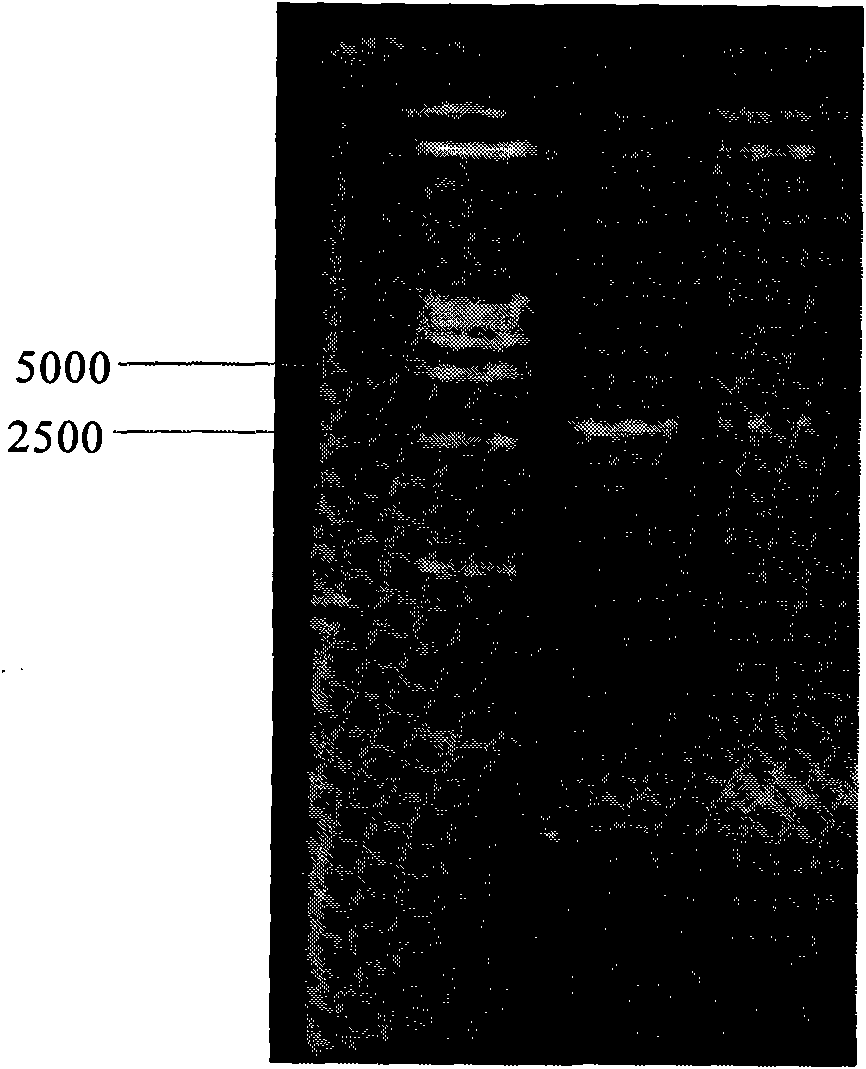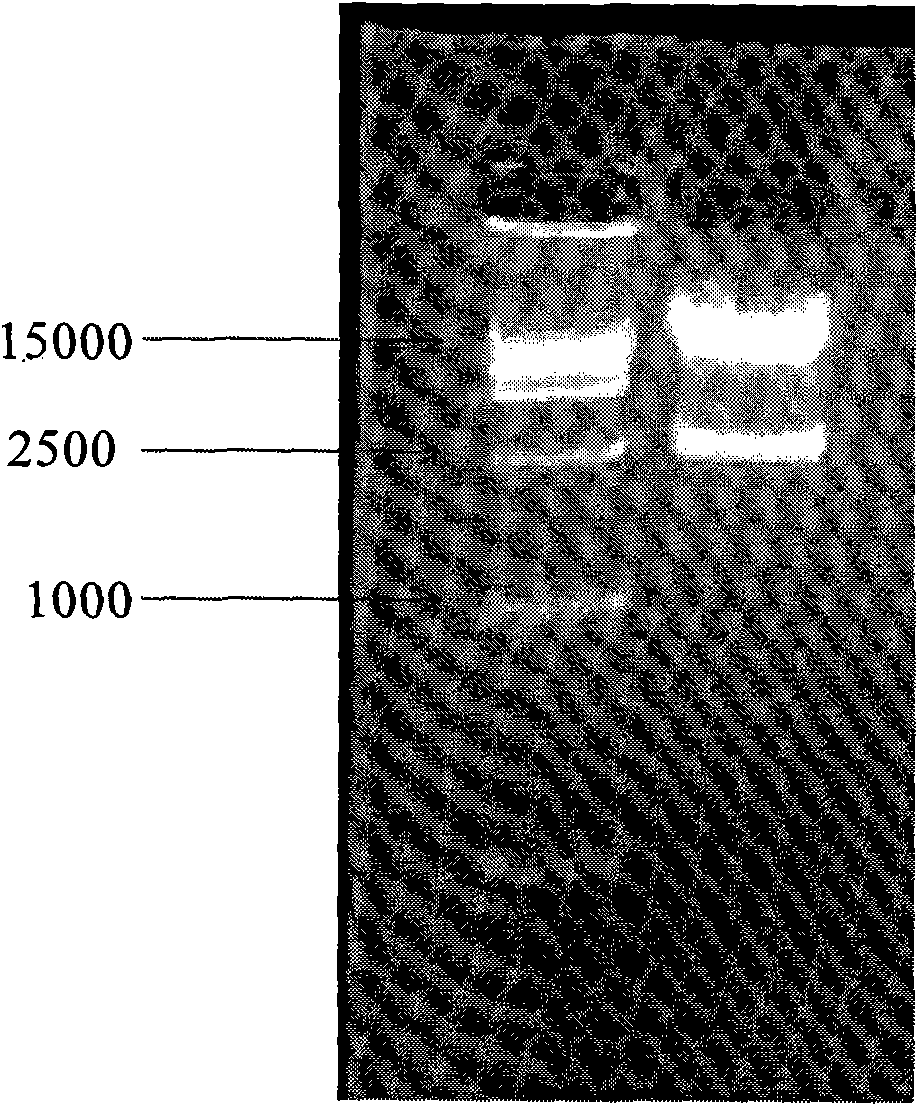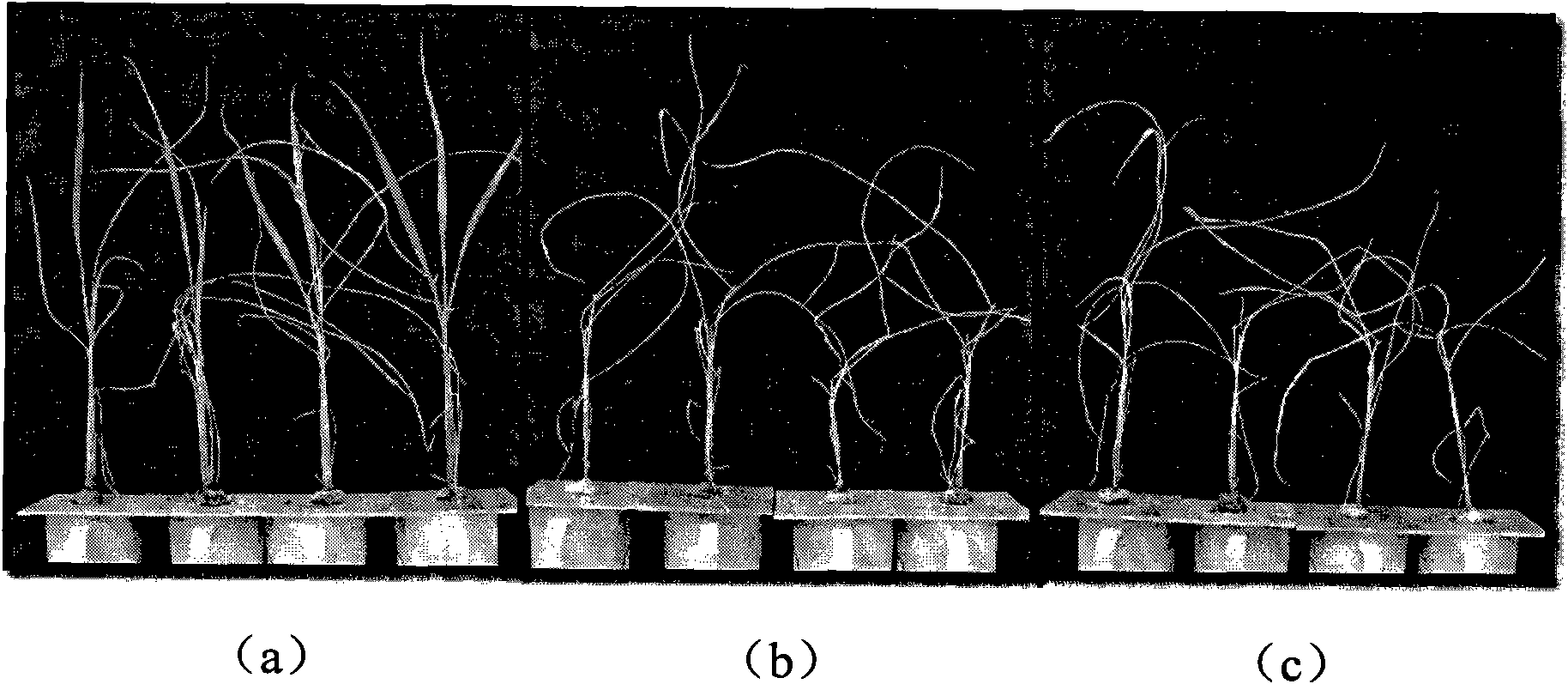Rice planthopper and borer-resistant gene OsRG2 and coding product and application thereof
A rice planthopper and transgenic plant technology, applied in application, genetic engineering, plant genetic improvement and other directions, to achieve the effect of promoting rice planthopper resistance and borer breeding
- Summary
- Abstract
- Description
- Claims
- Application Information
AI Technical Summary
Problems solved by technology
Method used
Image
Examples
Embodiment 1
[0028]Example 1, Obtaining of OsRG2 Entire Encoding cDNA
[0029] 1) Extraction, quality inspection and first-strand synthesis of total cDNA for rice stem RNA;
[0030] 2) Synthesize the SH2 cDNA sequence from the first strand of the total cDNA with polymerase chain reaction (PCR), and then
[0031] SH2 was sequenced and transformed to obtain the gene OsRG2, and its PCR electrophoresis pattern is attached figure 1 .
[0032] 3) Construction of pMD-19-OsRG2 cloning vector and gene base analysis
[0033] The PCR product was cloned into the Takara company pMD-19 vector by T to obtain the pMD-19-OsRG2 vector, and passed through CaCl 2 into TG1 Escherichia coli. After pMD-19-OsRG2 was identified by EcoRI and PstI digestion, the TG1 bacterial liquid containing the pMD-19-OsRG2 vector was sent to Shanghai Bioengineering Co., Ltd. for sequencing. The sequencing was spliced with the software Chromas and Contig to obtain the sequence SEQ ID No.1 in the sequence listing. The gene...
Embodiment 2
[0034] Example 2, using overexpression technology to study the biological function of OsRG2 gene
[0035] 1) Design forward and reverse primers, and PCR amplify a DNA fragment with a length of 2711 bases from the 52nd to the 2762nd.
[0036] 2) The 2711bp OsRG2 DNA fragment was forward inserted into the pCAMBIA1301-35S engineering vector between the CaMV35S promoter and the 3'NOS terminator by the DNA subcloning method to obtain the OsRG2 gene overexpression vector. figure 2 .
[0037] 3) The OsRG2 gene overexpression vector was transferred into Agrobacterium EHA105 by electroporation to obtain the Agrobacterium engineered cell line. The rice callus was infected by Agrobacterium transfection method, and the co-infected rice callus was cultured on NBDS medium containing hygromycin, and the first selection was 20 days. After the new resistant callus grows, the resistant callus is stripped from the parent body and transferred to a new selection medium NBDS2, and one resistant ...
Embodiment 3
[0040] Example 3. Using antisense suppression technology to study the application of OsRG2 gene in rice insect-resistant breeding
[0041] 1) Design forward and reverse primers, and PCR amplify a 932-base DNA fragment from the 965th to the 1896th.
[0042] 2) The 932bp OsRG2 DNA fragment was reversely inserted into the pCAMBIA1301-35S engineering vector between the CaMV35S promoter and the 3'NOS terminator by DNA subcloning method to obtain the OsRG2 gene antisense expression vector.
[0043] 3) Using the OsRG2 gene antisense expression vector, refer to the steps 3-4 in Example 2 to obtain a homozygous strain transfected with the OsRG2 gene for subsequent biological function analysis.
[0044] 4) Both the transgenic line and the non-transgenic rice were subjected to the brown planthopper damage test, the survival of the plants was compared, and the function of OsRG2 was analyzed. After 14 days of damage by rice planthoppers, it was found that the growth of non-transgenic rice...
PUM
 Login to View More
Login to View More Abstract
Description
Claims
Application Information
 Login to View More
Login to View More - R&D Engineer
- R&D Manager
- IP Professional
- Industry Leading Data Capabilities
- Powerful AI technology
- Patent DNA Extraction
Browse by: Latest US Patents, China's latest patents, Technical Efficacy Thesaurus, Application Domain, Technology Topic, Popular Technical Reports.
© 2024 PatSnap. All rights reserved.Legal|Privacy policy|Modern Slavery Act Transparency Statement|Sitemap|About US| Contact US: help@patsnap.com










